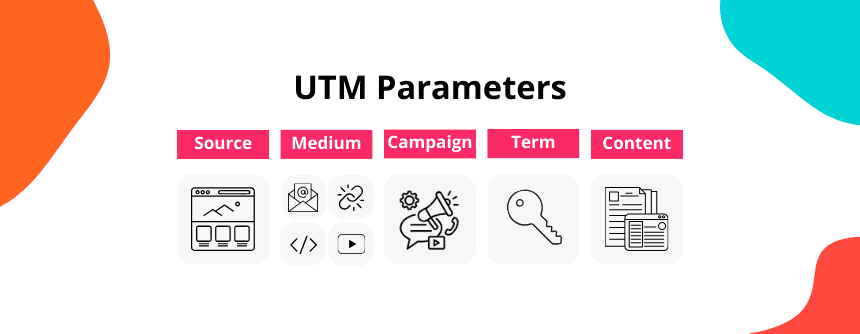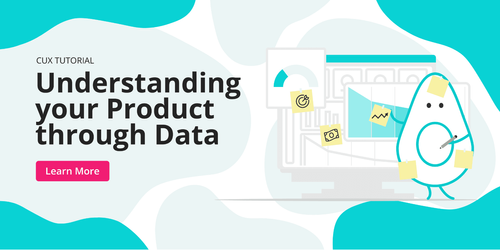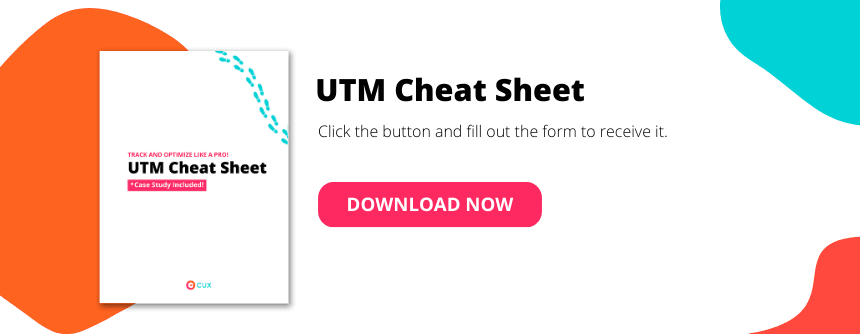CUX Tutorial
7.11.2023
8 minutes read
From Black Friday to Beyond: Mastering UTM Tracking for Promotions [FREE UTM CHEAT SHEET]
In the digital marketing landscape, some concepts might seem like low-hanging fruit—obvious and simple to grasp. Yet, there's one topic that, though unquestionably useful and essential, often remains in the shadows.

List of Contents
In the digital marketing landscape, some concepts might seem like low-hanging fruit—obvious and simple to grasp. Yet, there's one topic that, though unquestionably useful and essential, often remains in the shadows, and doesn't get the attention it deserves. We're talking about UTM parameters.
The Unexplored Potential of UTM Parameters
For too many enterprises, UTM parameters remain an untapped or even undiscovered asset, lying dormant, and waiting to unlock their potential to inform, guide, and optimize marketing strategies. The consequences of this neglect are significant: marketing budgets may be allocated ineffectively, campaigns could fall short of their potential, and chances to fine-tune strategies may pass by unnoticed.

Even though UTM parameters are quite simple yet powerful, many businesses tend to either overlook their importance or hand off their management to external agencies. The result? A gap in understanding and communication that unfortunately prevents valuable marketing data and insights from reaching the decision-makers who need them the most.
It's Time for a Change: Maximizing Marketing with UTM Parameters
UTM parameters can turn the data into actionable insights that can drive your enterprise forward. Whether you are a marketing specialist, a business owner, or a decision-maker in your organization, UTM parameters can become your most valuable ally, not just on Black Friday, but in every marketing campaign.
In the following sections, we will provide you with full understanding UTM tagging. You'll learn what UTMs actually are, how to choose the right parameters, what are the best practices to follow and common mistakes to avoid. This read will empower you to take charge of your marketing data and make informed, data-driven decisions.
What Are UTM Parameters?
UTM parameters are a way to track and analyze the effectiveness of your online marketing efforts, particularly in the context of website traffic. UTM stands for "Urchin Tracking Module," which was initially developed by Urchin Software Corporation (later acquired by Google) and is now commonly used in Google Analytics and other analytical tools.
It's a set of tracking parameters added to the end of a URL. These parameters, often referred to as UTM tags or UTM codes, serve as data tags that help to identify and categorize the sources of traffic that lead users to your webpage.
With UTM parameters you will be able to answer questions like:
- Where did the traffic come from? (e.g., social media, email, a specific website)
- Which specific marketing campaign or ad led to the visit? (e.g., a specific Facebook ad, email newsletter, or banner on a partner website)
- What specific content or link within that campaign was clicked? (e.g., a specific post, button or an image)
UTM Key Components
UTM parameters consist of key-value pairs separated by the "?" and "&" symbols in a URL. The 5 standard UTM parameters you can use are:
- utm_source: This parameter indicates the source of your traffic, like a search engine (e.g., Google), a specific website (e.g. Example Domain ), a social media platform (e.g. Facebook), or an email newsletter.
- utm_medium: It defines the medium or type of marketing actions, such as "cpc" for cost-per-click advertising, "organic" for organic search, or "email" for email marketing.
- utm_campaign: This parameter is used to specify the marketing campaign or promotion, such as a Black Friday sale or a product launch.
- utm_term: While typically associated with paid search campaigns, this parameter can specify the keywords that triggered an ad or led to a particular click. This one can help you understand which keywords are driving traffic.
- utm_content: This parameter can be used to differentiate between different elements within the same campaign, such as various ad variations, links within an email, or specific calls to action.
Here's an example of a URL with UTM parameters:

As you can see, it serves as a valuable tool for understanding the effectiveness of your online marketing activities. But now the big question is, how to leverage the power of UTM tagging in the most effective way.
To explore the answers and gain deeper insights, download our UTM Cheat Sheet with best practices, naming convention guide, and a case study:
Using UTM Parameters for Black Friday Marketing
As Black Friday is just around the corner, the stakes are high for the majority of enterprise's marketing campaigns. This is the time when marketing departments go all-in with their budgets to ensure a successful season of promotions. That's why tracking and measuring every activity is absolutely essential, particularly during this critical period. Luckily, UTM tags are ready to help you with:
Distinguishing multiple promotions: On Black Friday, it's common to run multiple promotions simultaneously. UTM tags will allow you to differentiate between these promotions with ease. For instance, you can use unique campaign names in your UTM tags for each promotion, such as "BlackFridaySale" and "BFBundleDeal."
Measuring individual performance: With UTM tags, you can track the performance of each Black Friday promotion separately. This means that you can precisely measure which promotion is driving more traffic, conversions, or revenue. For example, by using distinct UTM tags for different banner ads or email campaigns, you can directly attribute their impact on sales.
Identifying top sources: UTM codes help you identify which traffic sources are most effective. Whether it's social media, email marketing, or paid search, you can see which sources deliver the most valuable traffic and allocate resources accordingly.
Optimizing ad spend: Thanks to knowing which promotions and traffic sources are performing well, you can optimize your ad spend. This insight allows you to allocate your budget where it matters most, ensuring a better return on investment during the Black Friday season.
Tailoring content: UTM tags can even be used to measure the performance of different content elements within your Black Friday campaigns. For example, you can track the effectiveness of different banners, call-to-action buttons, or email content, which will help you to fine-tune your messaging.
Staying agile: Real-time monitoring of UTM-tagged data during Black Friday will enable you to make immediate adjustments. If one promotion is underperforming, you can shift resources or refine your strategy to capitalize on emerging opportunities.
The most important thing is not to let Black Friday marketing be a gamble. Embrace UTM parameters to make data-driven decisions, maximize your ROI, and rock this Black Friday season and beyond.
Data Analysis and Reporting: the Power of UTM Insights
After deploying UTM parameters in your marketing campaigns, the real magic happens when you harness the data they've collected. It's all about turning numbers into actionable insights. Here is how to make it happen:
- Data Collection and Centralization:
- Gather all that UTM-tagged data from various sources and campaigns.
- Keep it organized in one place, like your trusty analytics tool.
- Tracking Key Metrics:
- Define key metrics that align with your campaign goals, such as conversion rates, click-through rates, and, of course, revenue.
- Monitor these metrics and watch how they change over time with the analytical tool of your choice.
- Your Custom Reports and Dashboards:
- Build custom reports and dashboards within your analytics tool to focus on the most relevant data.
- Turn your key metrics into visual wonders that are easy to understand and, more importantly, act upon.
- Comparative Analysis:
- Compare data across different campaigns, sources, and mediums to identify what's working and what needs improvement.
- Analyze trends and patterns to make informed decisions for future campaigns.
- Data-Driven Optimization:
- Use the insights from your UTM data analysis to optimize marketing strategies, allocate budgets effectively, and refine content.
- Experiment with A/B testing and other optimization techniques to continually improve performance.
- Periodic Review and Adjustment:
- Regularly review and adjust your UTM-tagged campaigns based on data analysis.
- Be agile in responding to real-time insights, especially during critical marketing periods like Black Friday.
With these steps, you'll turn the raw data from your UTM parameters into actionable insights that drive success in your marketing campaigns.
Feeling a bit overwhelmed? Fear not. When equipped with the right analytics tool, you can focus on the most important aspects: reasoning and decision making. Let CUX take care of the rest. As a digital experience analytics tool, it offers even more capabilities than you might expect. With CUX, you can explore your customer's journeys and how they navigate your website, gaining a full picture view of their behavior through the campaign.
Conclusion
In a nutshell, UTM tracking for promotions is a vital yet often overlooked aspect of digital marketing. UTM parameters, though simple in concept, hold the potential to transform the way enterprises track, understand and optimize their marketing strategies. When you don't use it, you risk wasting your budget and missing out on valuable insights.
By understanding UTM parameters, leveraging best practices discussed in our UTM Cheat Sheet, and using them strategically during critical periods such as Black Friday, marketers can:
- Differentiate multiple promotions and measure their individual performance
- Identify top-performing traffic sources to effectively allocate resources
- Optimize ad spend for a better ROI
- Tailor content elements to fine-tune messaging
- Stay agile and adjust strategies in real-time
Furthermore, the power of UTM insights is unleashed through data analysis, reporting, and data-driven optimization. By centralizing data, tracking key metrics, creating custom reports, and performing comparative analysis, marketers can continually refine their campaigns, responding to real-time insights and optimizing their strategies for success.
And if this all sounds a bit overwhelming, don't worry. There are analytics tools like CUX that can help you make sense of the data and focus on what really matters: making your marketing strategies a big success. So, don't let UTM tracking be the unsung hero of your marketing efforts. Embrace it, and watch your campaigns thrive!

5/10/2023
8 minutes read
CUX Insights: Understanding your product through data
In the world of digital products, it's crucial to understand and improve how users experience them. This article explores how data is the key to achieving this goal.
Read more
3/07/2020
8 minutes read
5 tips to make analytics easier for you
The importance of analytics in business is no longer a novelty. Experts say that everyone should implement analytics in their business as soon as possible.
Read more
28/09/2023
8 minutes read
5 ways to optimize the customer journey
For e-commerce businesses, ensuring the comfort of customer experiences throughout the customer journey is a make-or-break situation.
Read more
26/11/2021
8 minutes read
The best Black Friday deals for your business growth
Black Friday is almost around the corner, which means it’s time for great deals on SaaS software and highly desirable tools and apps.
Read more

